On December 30, 1546, Henry VIII signed his final document: his last will and testament. The will was extremely important. It changed the line of succession considerably and it was arguably thanks to Katherine Parr. One of the biggest changes was to make sure his son, the future Edward VI, would have a parliament to help him rule the country. Being nine-years-old, Prince Edward Tudor was too young to make decisions himself. Contrary to popular belief, these changes did not include a regent.

Henry VIII’s Final Will and Testament: The Order of Succession
On December 30, 1546, Henry VIII signed his last will and testament.What were those changes and how did they affect the future?
Changes to the Line of Succession: The Introduction of Henry VIII’s Daughters
The ladies Mary and Elizabeth Tudor were added back into the line of succession, despite being illegitimate.
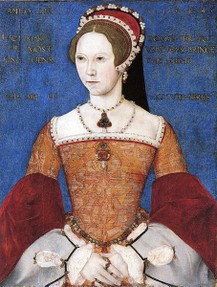 One of the biggest and most important changes for many was that to the line of succession. Before this last will and testament, Edward Tudor was the heir presumptive and that was all that was confirmed. Mary Tudor and Elizabeth Tudor had both been removed from the line of succession due to the marriages between Henry VIII and their mothers being annulled. They were no longer legitimate and could not become queens in their own right.
One of the biggest and most important changes for many was that to the line of succession. Before this last will and testament, Edward Tudor was the heir presumptive and that was all that was confirmed. Mary Tudor and Elizabeth Tudor had both been removed from the line of succession due to the marriages between Henry VIII and their mothers being annulled. They were no longer legitimate and could not become queens in their own right.
However, Jane Seymour and Katherine Parr both helped to change that. Initially Jane Seymour helped to strengthen Henry VIII’s relationship with his elder daughter, Mary. While it did not change the line of succession, it definitely helped over the next 10 years. Would Jane have ever helped strengthen Henry VIII’s relationship with Elizabeth? That is unknown, and it would depend on her views of Anne Boleyn, Elizabeth’s mother.
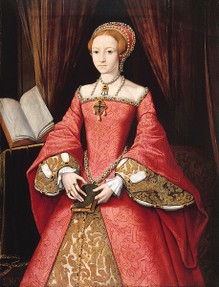 Katherine Parr helped to put the final changes in place. She did everything to support both her step-daughters’ claims to the throne. Despite being a reformist sympathizer, she wanted the best for the Catholic Lady Mary Tudor. However, she was always going to have a soft spot for Lady Elizabeth Tudor, who she wanted to be raised with Protestant views. Elizabeth would have been almost 10 years old when Katherine married Henry VIII, so this was the perfect chance to help her.
Katherine Parr helped to put the final changes in place. She did everything to support both her step-daughters’ claims to the throne. Despite being a reformist sympathizer, she wanted the best for the Catholic Lady Mary Tudor. However, she was always going to have a soft spot for Lady Elizabeth Tudor, who she wanted to be raised with Protestant views. Elizabeth would have been almost 10 years old when Katherine married Henry VIII, so this was the perfect chance to help her.
It was arguably because of Katherine that Mary and Elizabeth grew closer to their father, and he agreed that they should be placed into the line of succession. Of course, it could not happen before Prince Edward as he was a male. They would be placed after him and in order of age. He may have hoped that Edward would have sons of his own and his illegitimate daughters would never become queens.
Changes to the Line of Succession: The Addition of the Suffolk Line
Henry VIII needed to make a decision over which of his sisters' lines he would include next.
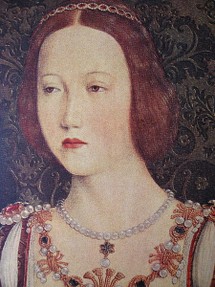 Henry VIII did have backup plans should none of his children have children of their own. Originally, the crown would have passed to Henry’s elder sister’s line. Margaret Tudor had married the Scottish King James VI. They had one surviving heir, James, who had died by this point. His daughter, Mary, Queen of Scots, was now on the throne.
Henry VIII did have backup plans should none of his children have children of their own. Originally, the crown would have passed to Henry’s elder sister’s line. Margaret Tudor had married the Scottish King James VI. They had one surviving heir, James, who had died by this point. His daughter, Mary, Queen of Scots, was now on the throne.
Henry VIII made it clear that he didn’t want his Scottish family to take the English crown. Not only did he not like the Scottish—as evident by the Battles of Flodden Field in 1513 and Solway Moss in 1542—the country was still Catholic and he didn’t want England to go backwards.
He chose the family of his favourite sister, Mary Tudor. Mary had died in 1533, but she had had four children, two of which survived adulthood. The elder of the two had three daughters. Those four women were placed in the line of succession after Elizabeth Tudor. The Scottish line then had to be placed afterwards. Of course, with so many people in the line of succession before them, Henry VIII probably believed that it would never come to that. It possibly wouldn’t have done had Edward VI not changed the line of succession and tainted his cousin’s family name.
More Wizzley Articles About the Lines of Henry VIII's Sisters
Setting the Conditions of Mary Tudor’s and Elizabeth Tudor’s Successions
Henry VIII made sure that his daughters would only take the crown if they deserved it. He worried that they would turn out like his view of their mothers.
Henry VIII did not simply add his daughters to the line of succession without thought. He decided to make some conditions. If they chose not to abide by them, they would forfeit their claims.
The most important one was to do with marriage. Neither daughter was allowed to marry without the written support of the remaining Privy Council members. These members were chosen by Henry VIII to look after Edward when he became King. Mary Tudor was the only daughter to marry in the end, but she choose her husband after being crowned Queen of England. She chose a man who was unfavorable with England and the Privy Council, probably partially her reasoning for waiting. She would not have done anything to jeopardize her chance for the crown after seeing it taken away from her due to the breakdown of her mother and father’s marriage.
Henry VIII Creates the Privy Council for Edward VI
Edward VI was too young to rule on his own, so Henry VIII put provisions in place.
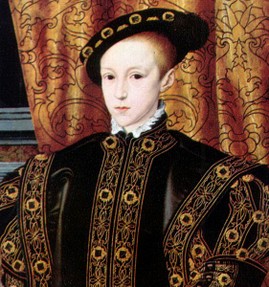 Since his son was just nine-years-old, he needed to create a Privy Council. Most monarchs would appoint a regent, as had happened by James V of Scotland when he died leaving the one-week-old Mary, Queen of Scots ruling the country. However, Henry VIII chose against this. He simply appointed 16 executors.
Since his son was just nine-years-old, he needed to create a Privy Council. Most monarchs would appoint a regent, as had happened by James V of Scotland when he died leaving the one-week-old Mary, Queen of Scots ruling the country. However, Henry VIII chose against this. He simply appointed 16 executors.
However, it did not go to Henry VIII’s plan in the end. Edward Seymour, the uncle of Edward VI, appointed himself Lord Protector. After three years, he was executed and John Dudley became Lord Protector. That soon led to the marriage of Lady Jane Grey to John’s son, and the “unlawful” change to the line of succession.
Henry VIII made a number of changes in his final will and testament. Not all were favorable with the public, but it didn’t affect his decision. The ones mentioned above are some of the more poignant changes that affected the country in later years.
More Wizzley Articles About Edward VI and His Lord Protector, Edward Seymour
You might also like
England Under the Tudors: Would King Edward VI Have Been a Goo...Edward VI reigned between 1547 and 1553 when he was just a boy. It's hard to ...
Lady Jane Boleyn: Vindictive Woman or Pawn in a Plot?Jane Boleyn is known for her part in bringing down the Boleyn faction. How mu...
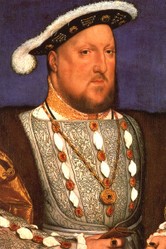
















 Alternate History: What If Mary I Had a Child?on 01/26/2015
Alternate History: What If Mary I Had a Child?on 01/26/2015
 Francis II of France Dies: Mary, Queen of Scots Returns Homeon 12/05/2014
Francis II of France Dies: Mary, Queen of Scots Returns Homeon 12/05/2014
 Does Writedge Pay? Payment Proofon 12/03/2014
Does Writedge Pay? Payment Proofon 12/03/2014
 Alternate History: What If Lady Jane Grey Was Not Deposed?on 11/11/2014
Alternate History: What If Lady Jane Grey Was Not Deposed?on 11/11/2014

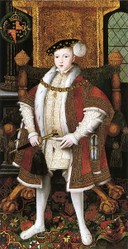
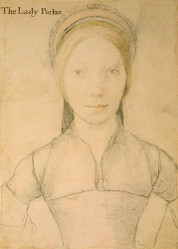
Comments